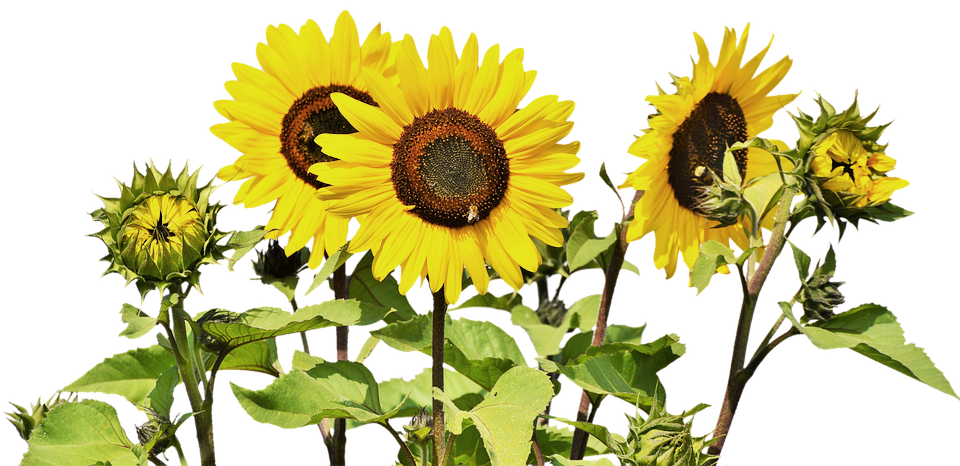
Top 3 Perennials for the Prairies
By Chris Edmunds
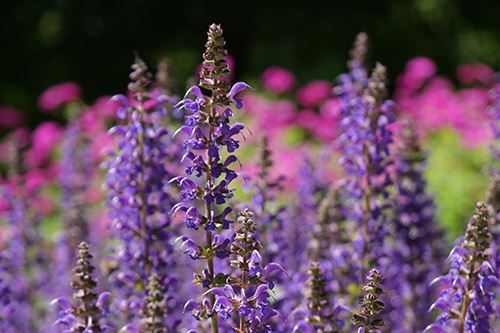
Perennials are the gifts that our gardens keep on giving. While we do love the excitement of picking new top-performing annuals every year, there’s something comforting about reliable perennials that appear every year. Like a visit from an old friend, it’s just lovely to see the familiar flora flourish year after year.
Prairie Perennials for the Midwest
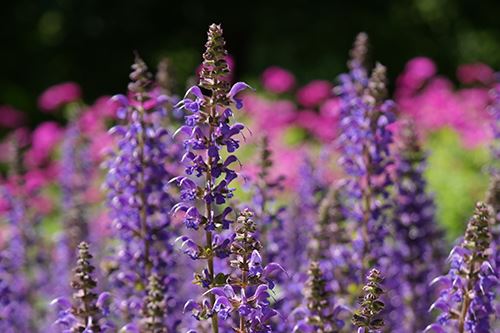 While annual flowers offer tons of dazzling color, they’re all designed for one high-octane season before they’re done. Not hardy in our area, they simply don’t have the toughness to make it through our winters - so we’ve designed them to give it all they’ve got in spring, summer, and fall.
While annual flowers offer tons of dazzling color, they’re all designed for one high-octane season before they’re done. Not hardy in our area, they simply don’t have the toughness to make it through our winters - so we’ve designed them to give it all they’ve got in spring, summer, and fall.
Perennials, on the other hand, are tough plants that can make it shivering through our winter and come out ready to shine again in spring, year after year. Once they take root, they have the depth of character and resilience to make it through harsh winter weather.
At Kaw Valley, we’re used to gardening with the same challenging weather as all of our customers, so offering resilient perennials that thrive year after year is important to us. Here are some of our favorites that make a great addition to your garden - ready to impress as soon as the spring melt arrives.
Agastache
These plants are a type of herb (hyssop) that have been bred to enhance their flower power. What we love about these plants is that their tall flower spikes aren’t the only showy part of the plant. The foliage comes dressed to impress too.
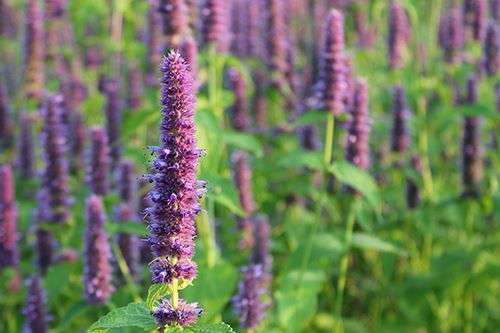 Your classic agastache varieties boast pretty shades of indigo and purple - we love the Golden Jubilee and Blue Boa varieties - but as a flower with growing popularity, there are many other options, like Sunset Hyssop with soft coral petals or Heatwave with violet-rose flower spikes. Golden Jubilee has the added attraction of bright chartreuse foliage, resembling Sun Coleus, when it emerges in the late spring.
Your classic agastache varieties boast pretty shades of indigo and purple - we love the Golden Jubilee and Blue Boa varieties - but as a flower with growing popularity, there are many other options, like Sunset Hyssop with soft coral petals or Heatwave with violet-rose flower spikes. Golden Jubilee has the added attraction of bright chartreuse foliage, resembling Sun Coleus, when it emerges in the late spring.
From across your yard, the flowers look almost fuzzy, but that’s just because of the intricate detail of tiny petals bunched up. As you get closer, you’ll see all the blooms packed together onto pretty vertical spikes, and you’ll be treated with their sweet licorice/mint scent that is just as irresistible to birds and butterflies as it will be to you.
Growing Agastache
Choose a spot with well-draining soil and mix in compost. Give them at least two feet of space between plants so that they have room to grow.
Maintenance is very easy for agastache, as they mostly mind their own business and keep to themselves. What we love about agastache is their long season of bloom. Many perennials have only a two to six-week window of bloom, but agastache will bloom all summer and even into the fall! We have not experienced and problem with insects on these tough perennials, and they will keep blooming without deadheading. Easy, reliable and long blooming, can it get any better than that?!
Buddleia
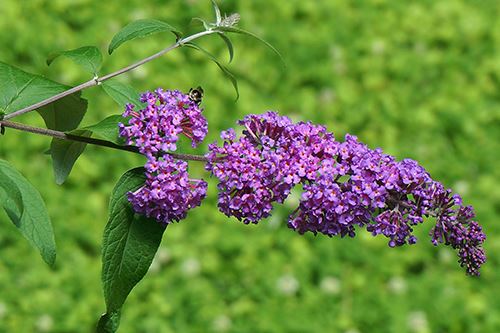 Also known as Butterfly Bush or Summer Lilac, buddleia comes in an array of dazzling jewel-toned blooms of indigo, pink, purple, pearly white, and lilac, but we particularly love the dramatic Black Knight Buddleia for its hypnotic dark violet flowers and blue-green foliage. Wisteria Lane is unique and stunning with gorgeous weeping clusters of lavender flowers like its namesake. Monarch Crown Jewels is another favorite, with its chartreuse colored leaves that contrast beautifully with their dark violet-purple flower spikes.
Also known as Butterfly Bush or Summer Lilac, buddleia comes in an array of dazzling jewel-toned blooms of indigo, pink, purple, pearly white, and lilac, but we particularly love the dramatic Black Knight Buddleia for its hypnotic dark violet flowers and blue-green foliage. Wisteria Lane is unique and stunning with gorgeous weeping clusters of lavender flowers like its namesake. Monarch Crown Jewels is another favorite, with its chartreuse colored leaves that contrast beautifully with their dark violet-purple flower spikes.
These plants are easy to maintain and reward you with fast growth and spectacular long, spiked blossoms in the early summer. This is another perennial that has a long bloom season that can be enjoyed all the way into fall, and also is not bothered by insects.
The name “Butterfly Bush” implies it, but you could never imagine all the butterflies this perennial will bring to your yard. They love the nectar this perennial produces, and you’ll enjoy them as little flying decorations to your landscape.
Growing Buddleia
The trickiest part of growing this plant comes before you plant it. They need very good soil drainage and aren’t as willing to compromise on this as some other perennials. Make sure you take the time to prepare your soil properly so that your butterfly bush can have a chance to become established to survive our prairie winters. Also, before winter arrives, put a few inches or more of mulch down to insulate the roots from the alternating freezing and thawing temperatures.
Keep an eye out for the signs of overwatering, like weak stems and yellowing leaves, as this is a good way to listen to your plant’s needs and correct your watering schedule!
The more dwarf varieties like the “Buzz” series, Monarch Crown Jewels, and Wisteria Lane do not need pruning, but the larger “Black Knight” could benefit, though it’s usually not necessary as long as they are planted in full sun. Prune it in the early spring to encourage new growth and heavy blooms. You can prune the bush to 1 to 2 feet, and it will produce loads of blooms over the summer. Don’t prune before winter, as the plant can become damaged from the cold. One good, spring pruning will provide a maintenance-free summer!
Sedums
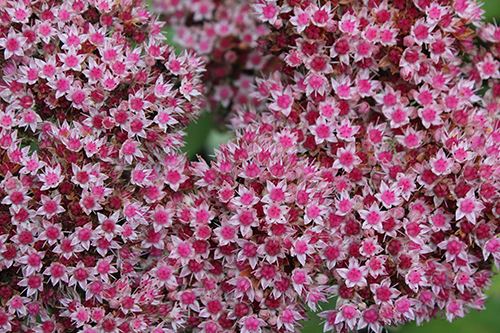 There are so many varieties of this perennial that we are confident you’ll find one that you love. There are two main groups -- upright sedums and creeping sedums--that describe the growth habit, but their clusters of blossoms and foliage color can be almost any shade imaginable. We have plenty of both varieties at our garden center in Woodlawn Wichita. With all the pinks, yellows, reds, blues, greens, and purples, our favorite has to be the Angelina Sedum which stands out in a crowd with vibrant chartreuse foliage. For a bright burst of color in fall, though, Class Act Sedum is a winner.
There are so many varieties of this perennial that we are confident you’ll find one that you love. There are two main groups -- upright sedums and creeping sedums--that describe the growth habit, but their clusters of blossoms and foliage color can be almost any shade imaginable. We have plenty of both varieties at our garden center in Woodlawn Wichita. With all the pinks, yellows, reds, blues, greens, and purples, our favorite has to be the Angelina Sedum which stands out in a crowd with vibrant chartreuse foliage. For a bright burst of color in fall, though, Class Act Sedum is a winner.
With a rainbow of colors on each plant, you don’t even need to choose a favorite. You can mix and match between different varieties to find plants that are ideal for groundcover and spilling out of containers, or taller plants to decorate borders and fences.
Growing Sedums at Home
Pick a sunny or part sun spot that drains well. It won’t require much maintenance. They’re drought-tolerant and only require moderate watering. As a member of the succulent family, they like good drainage, but while they tolerate drying out sometimes, they grow a lot slower when they don’t have the regular moisture they crave. Adding some compost in their soil will do wonders to keep them growing strong, but don’t use any fertilizer because they’ll end up growing too fast, weakening your plant and causing it to flop. Essentially, you can neglect this plant a little, and it’ll thrive even more!
A burst of color is usually exactly what we need in the spring after a long, cold, and dreary Kansas winter. While annuals are good for that summer exuberance, having your toughest perennials already in the ground makes for an exciting beginning to spring, where you get to see all of your old favorites again as they wake up and bloom.

